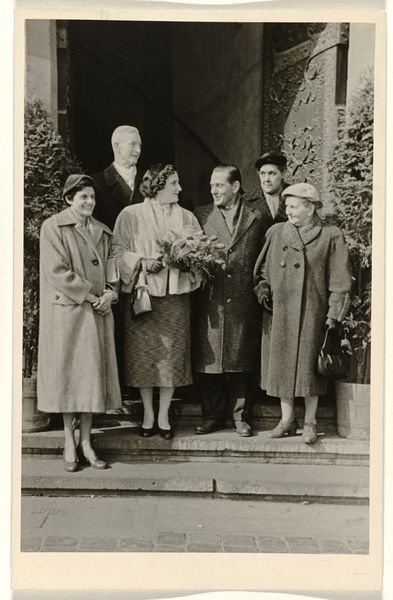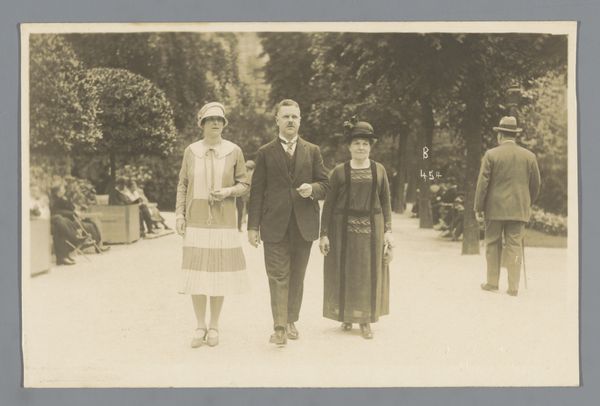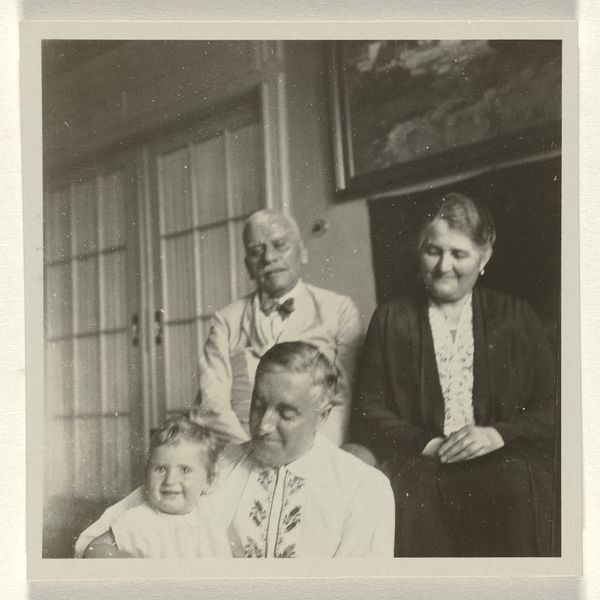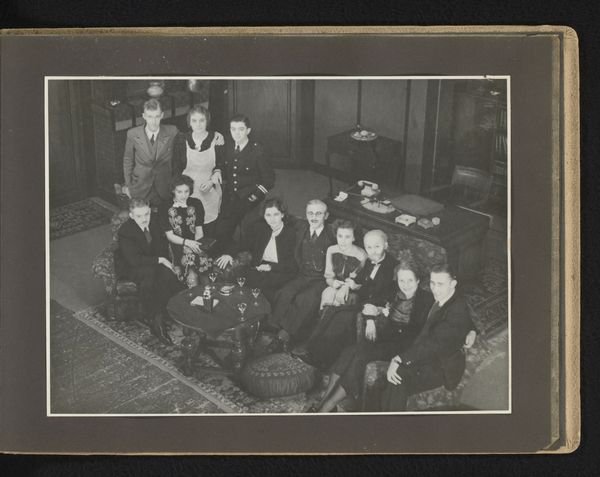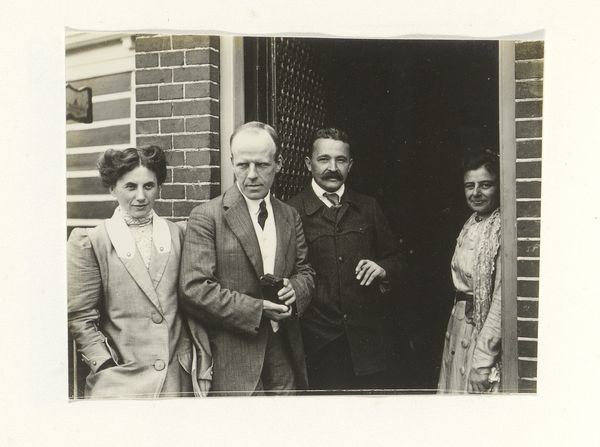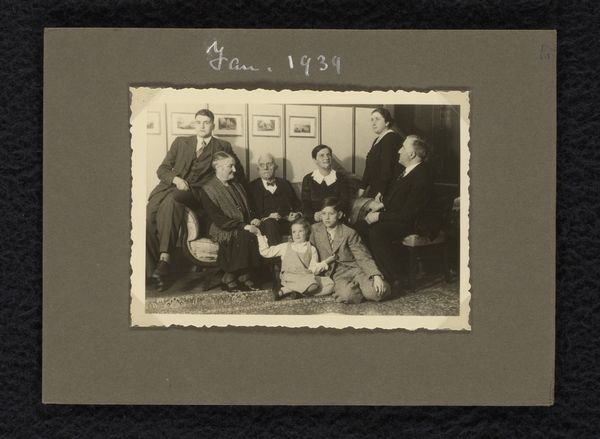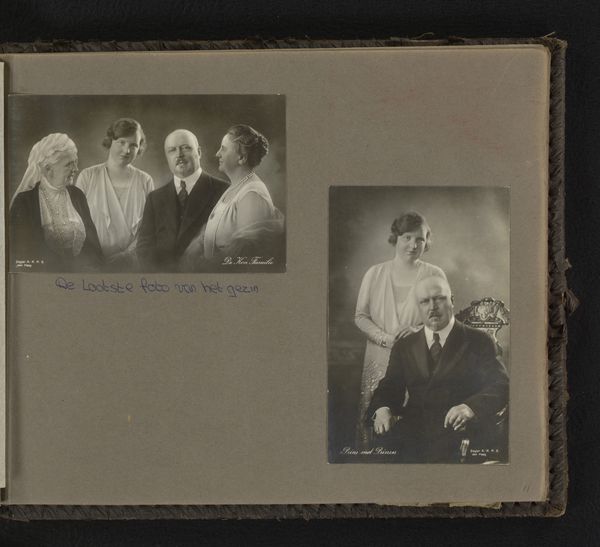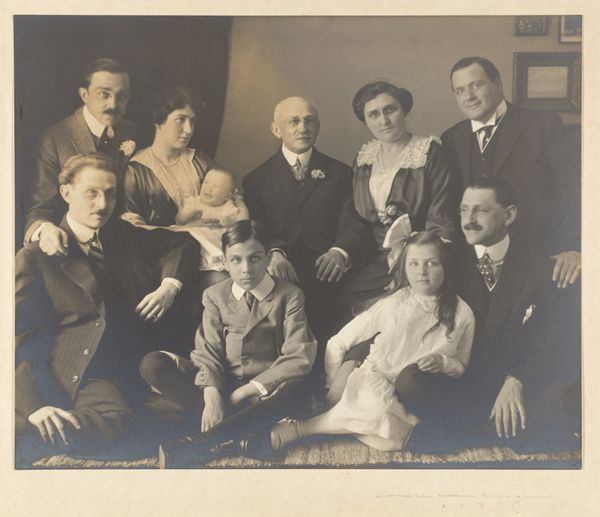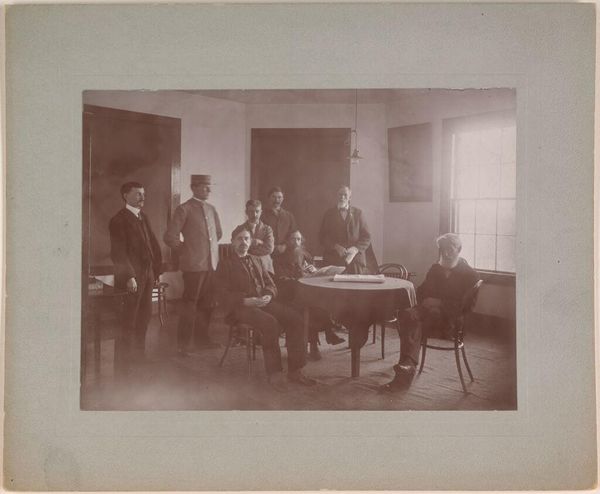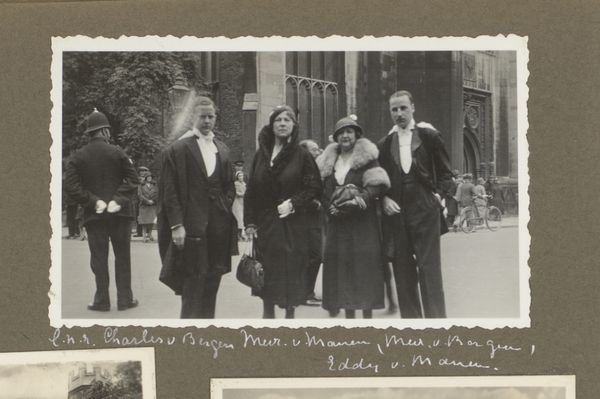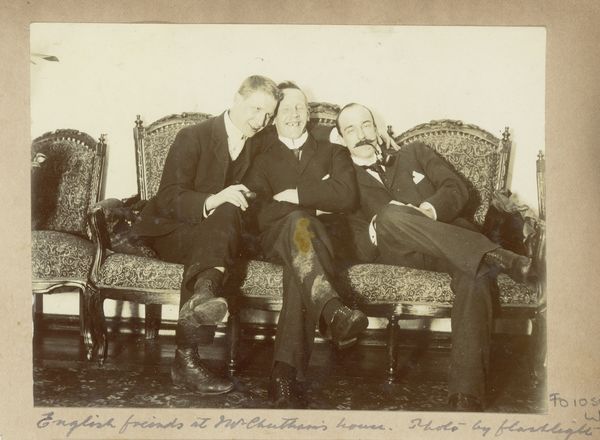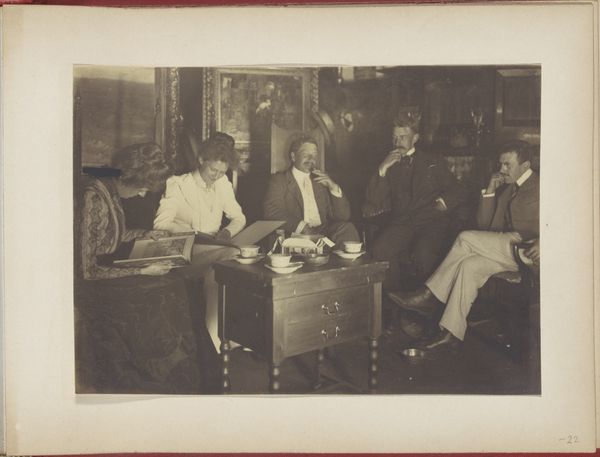
London, 30 September 1938. Mr. en Mrs. Chamberlain, temidden van het Engelsche koningspaar op het balcon van Buckingham Palace, danken voor de enthousiaste ontvangst na terugkeer van Chamberlain van de succesvolle vredesconferentie te München Possibly 1938 - 1939
0:00
0:00
anonymous
Rijksmuseum
photography, gelatin-silver-print
#
portrait
#
photography
#
historical photography
#
group-portraits
#
gelatin-silver-print
#
realism
Dimensions: height 105 mm, width 150 mm
Copyright: Rijks Museum: Open Domain
Editor: This gelatin silver print, likely taken in 1938 or 39, shows Neville Chamberlain with his wife and the King and Queen on the balcony of Buckingham Palace after returning from Munich. There’s such optimism radiating from Chamberlain's wave, even though, knowing what we do about history, it feels misplaced and naive. How do you interpret this image in light of the historical context? Curator: This photograph is fascinating as a document of the carefully constructed image of Chamberlain as a peacemaker. The arrangement – placing him between the King and Queen – attempts to visually equate him with royalty, bolstering his perceived authority and celebrating his controversial diplomatic efforts. What strikes me is the way this photo naturalizes a political narrative. It begs the question, who controlled the narrative? Editor: So, it was almost a piece of propaganda? The photograph does a lot of work in building up that image of Chamberlain. Were there dissenting voices or alternative imagery circulating at the time? Curator: Absolutely. While this image emphasizes national unity and relief, many opposed the appeasement policy. The photograph becomes a site of contestation; it masks underlying tensions and actively promotes a particular reading of the Munich Agreement. Look at the enthusiastic faces – the composition encourages the viewer to share in that uncritical adoration. Does that not feel forced to you? Editor: It does now, seeing it that way. Knowing the future, it’s hard not to view this photo with skepticism. The staging, the smiles… it all feels very deliberate, like a carefully managed performance. Curator: Indeed. And considering this image is now housed in a museum, what do you think that implies? Is it a cautionary tale or a historical artifact stripped from its political purpose? Editor: I guess it serves as a reminder of how easily public opinion can be manipulated, and how important it is to question these seemingly straightforward depictions of historical events. Curator: Precisely. By critically examining such images, we gain insight into the complex relationship between power, representation, and historical memory. I've certainly learned from our talk!
Comments
No comments
Be the first to comment and join the conversation on the ultimate creative platform.

